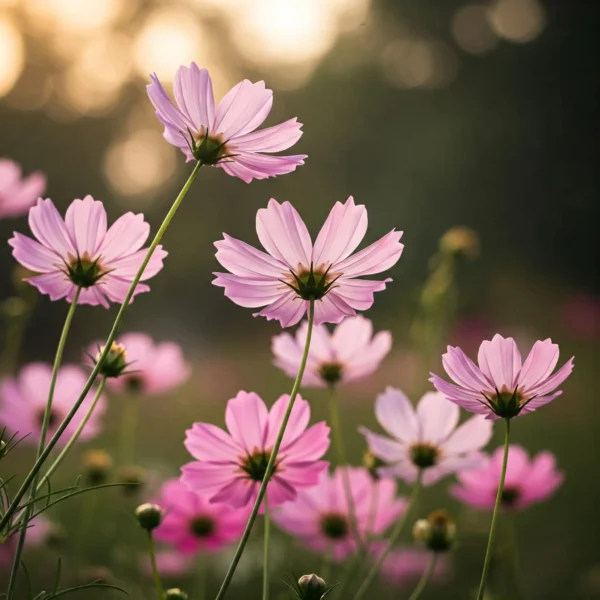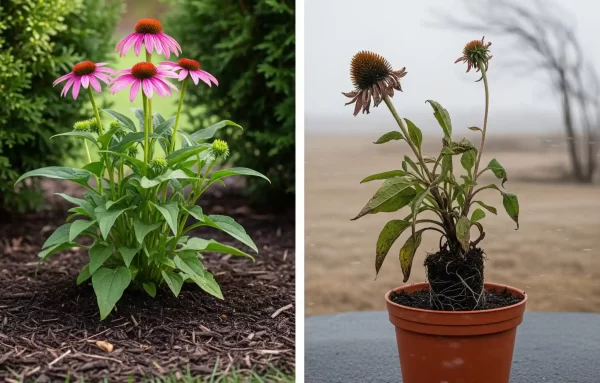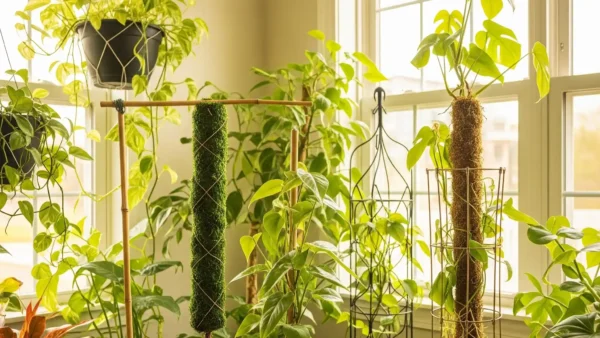What Plants Don’t Like Wood Ash? Friend or Foe to Your Favorite Plants?
Have a wood-burning stove that keeps you warm on cold nights or a nice fireplace? That mound of unused wood ash is a free garden supplement just waiting to be scattered upon your soil, a hidden gem! Many long-time gardeners and old-timers swear by its advantages; it can definitely provide some nice things for your garden. But here’s a pretty significant and often asked question: are there plants that dislike wood ash?
Let’s be direct, then. The simple response is yes, certainly! Although some of your plants may gladly enjoy the nutrition wood ash may offer, many others—mostly those lovely acid-loving plants—can be rather unhappy and even hurt by it. Knowing what plants dislike wood ash is vitally essential to maintaining the health of your entire garden and preventing unintentional problems.
Given that bucket of ash, which plants should you avoid? But why, therefore, do they react so negatively to something that seems so natural? This book will cover the science (the simple way, I promise!), provide a list of the particular species you should safeguard, and show you how to properly utilize wood ash in your garden—if at all. Your excellent intentions should not cause any problems in the garden.
Why Does It Matter to Soil and What Is Really In It?
Let’s quickly look at what wood ash is really composed of before we start naming people and blaming trowels. It’s a result of burning wood, not just inert, fluffy gray stuff; it has certain unique chemical qualities from the trees it came from.

Here are the main points to understand about its makeup:
- Highly Alkaline (High pH): From a horticulture standpoint, the most crucial quality of wood ash is its extreme alkalinity. Usually between 9 and 13, with 7 being neutral, this indicates a high pH. This is a highly important quality that can radically alter your soil.
- Rich in Potassium (Potash): Wood ash is a rich natural supply of potassium, generally known as potash, or K on the fertilizer bags. A key macronutrient for plants, potassium significantly influences general vitality, disease resistance, and particularly in flowering and fruiting.
- Contains Calcium: It also offers calcium, another necessary mineral for robust cell wall formation in plants, which supports vigorous growth.
- Other Micronutrients: Depending on the kind of wood burned, ash may include minuscule levels of additional micronutrients including magnesium, phosphate, and several trace minerals required by plants in little amounts.
- Very Low in Nitrogen: Notably, wood ash has very little, if any, nitrogen. Wood ash will not produce nitrogen, which is essential for the growth of leafy greens.
Why then does all this count? That high alkalinity, together with the particular nutrients it has, is exactly what makes wood ash good for certain garden conditions but quite bad for others. It’s all about how it interacts with and alters your current soil chemistry.
The pH Factor: Alkalinity is the Key to the “No-Ash” List
Remember the vibrant pH strips from science class that were used to determine if something was acidic or alkaline? Your garden soil has a pH level as well! It’s a fairly major deal for plant health since it’s a measure of how acidic or alkaline your soil is.

How acidic or alkaline is my soil? Measured on a scale from 0 to 14, soil pH Seven point zero is regarded neutral. Anything below 7.0 is acidic; anything above 7.0 is alkaline, frequently referred to as “sweet” soil.
Why should plants care about pH? Most plants like a pH range. Within this particular spectrum, they can most efficiently take the necessary fundamental nutrients from the soil. Even if some minerals are physically present in the soil, certain ones can become “locked up” or unavailable to the roots of a particular plant if the pH is too high or too low. It’s like having a cupboard stocked with food but no can opener!
Wood ash increases soil pH: Adding wood ash to your soil will raise the pH since it is quite alkaline, hence reducing acidity and increasing alkalinity. In this regard, it works like including garden lime (calcium carbonate) to your soil.
The challenge for acid-loving plants: And this, my friends, is exactly why some plants suffer so much from wood ash! Making the soil more alkaline with wood ash is a recipe for problems if a plant is a “acid-lover” (meaning it flourishes in acidic soil, usually with a pH between 4.5 and 6.0). It can directly stress their sensitive root systems and stop them from absorbing vital nutrients like iron, which causes shortages.
Knowing which plants will say “no thank you” to wood ash depends on an awareness of this pH influence.
Your “Handle With Care” List of Plants That Dislike Wood Ash
Okay, let’s cut to the chase. Knowing which plants will not benefit from a dose of wood ash helps you to maintain every plant in your garden happy and healthy. These are the key categories and particular plants you should definitely AVOID using wood ash to or close to:
First, The Acid-Loving All-Stars (Ericaceous Plants): These are the #1 Group to Safeguard!
Renowned in the gardening community, this collection of plants thrives in acidic soil conditions. “Ericaceous” describes plants of the Ericaceae family; but, it’s usually used more widely for any plant that requires acidic soil—usually pH 4.5 to 5.5 or 6.0—to really thrive. Putting wood ash close to these lovely ones will surely stress and kill them.

Stay away from these acid-loving champs with wood ash:
- Blueberries: Maybe the most well-known acid-lover! To grow those tasty berries, they require somewhat acidic soil.
- Rhododendrons: These beautiful floral bushes are traditional ericaceous plants.
- Azaleas: They have the same passion for acidic environments as rhododendrons, closely linked to them.
- Camellias: Known for their lovely winter and spring flowers, camellias need acidic soil.
- Heath and Heather: Low-growing plants called heath and heather (Erica species, Calluna vulgaris) flourish on acidic, usually peaty soils.
- Mountain Laurel (Kalmia latifolia): A lovely native flowering plant requiring acidic conditions.
- Pieris (Andromeda or Lily-of-the-Valley Shrub): An acid-lover, Pieris is cherished for its spring blooms and usually vibrant new growth.
- Cranberries: These fruiting plants need extremely acidic, bog-like environments.
- Gardenias: Though some can be a little picky, gardenias usually like acidic soil for optimal flowering and health.
- Hydrangeas (especially for blue flowers): Some kinds of hydrangeas, particularly for blue flowers, are highly enjoyable. Bigleaf hydrangeas, or Hydrangea macrophylla, can alter their bloom hue depending on soil pH. Acidic soil, which they usually prefer, produces blue flowers. Raising the pH with wood ash will most certainly cause those blue flowers to become pink or mauve. Therefore, no wood ash if your aim is blue!
- Conifers (Pines, Firs, Spruces): Though many conifers are somewhat flexible, trees like Pines, Firs, and Spruces usually prefer acidic to neutral soil.
What results from using ash on these? You may probably notice yellowing leaves—especially between the veins—a disease known as chlorosis, commonly caused by iron deficit; stunted growth; bad flowering; and an overall lack of vitality. They simply won’t be happy campers!
Two. Potatoes: A Surprising Sensitivity to Consider
Some people could be surprised by this one! Although potatoes are not “acid-loving” in the same severe sense as blueberries, they certainly like somewhat acidic soil, preferably in the pH range of 5.0 to 6.5. Applying wood ash around your potato crop can boost the pH too much for their preference. More crucially, a higher (more alkaline) soil pH greatly raises the probability of a common potato disease known as potato scab. Rough, corky, scabby patches on the surface of the potato tubers caused by this bacterial illness render them unappealing and ugly. Therefore, it’s preferable to stay wood ash away from your spuds.

Three. Other Plants Preferring Slightly Acidic to Neutral Soil (Use Extreme Caution or Best to Avoid)
Apart from the genuine acid-lovers, many other frequent garden plants thrive on soil that is neutral to somewhat acidic. Although a little dusting of wood ash in a very large garden bed you know is already rather acidic may not directly harm some of these, it’s usually better to stay away from using it directly on or around them, or at the very least, check your soil pH first and move forward with great care.
Be careful with wood ash around these plants:
- Raspberries and blackberries (brambles) usually like somewhat acidic soil—about pH 5.5 to 6.5.
- Strawberries: Slightly acidic circumstances (pH 5.5 to 6.5) also help this fruit to flourish.
- Tomatoes: Though they often do best in somewhat acidic to neutral soil (pH 6.0 to 6.8), tomatoes can handle some variation. Excessive alkalinity from wood ash could impede their calcium absorption, which helps to cause blossom-end rot. Although wood ash has calcium, the significant pH change is the primary issue in this case.
- Peppers: Like tomatoes, peppers like somewhat acidic to neutral soil.
- Sweet Potatoes: These also like a somewhat acidic surroundings.
For these plants, if your soil is already in their happy pH zone, adding wood ash runs the danger of pushing it too far into the alkaline range, so affecting nutrient availability and general health.
Number four. Handle with Extra Care! Seedlings and Young Transplants
Generally speaking, it’s best to stay away from putting fresh wood ash directly around fragile seedlings or newly transplanted plants regardless of the particular plant kind. Their immature root systems are especially sensitive, and fresh wood ash’s high alkalinity and salt content can readily “burn” them, harming or even killing them. Allow them to first become well-established.
Apart from the “No-Go” List, other circumstances calling for careful handling of wood ash include
Though a plant isn’t technically on the “dislikes wood ash” list, there are other circumstances and factors where using wood ash calls for extreme caution or should be avoided entirely.
- Should Your Soil Be Alkaline: This is a major one! Should your garden soil be neutral (pH 7.0) or alkaline (pH above 7.0), do not apply wood ash. It will merely make your soil even more alkaline, which can be harmful to a very wide spectrum of plants, not only the devoted acid-lovers. Testing your soil pH before adding any additives helps to determine this completely.
- Don’t Overdo It: When it comes to wood ash, more is absolutely NOT better. Applying too much wood ash could cause major issues even for plants that can handle or perhaps gain from a little amount of wood ash, such those in extremely acidic soil requiring a potassium boost. Among them include too high pH, nutritional imbalances (too much potassium can affect magnesium absorption, for instance), and soil salt accumulation, all of which can compromise plant development.
- Using on Windy Days: Wood ash is quite fine and powdery. Trying to distribute it on a windy day is a sure way for it to blow all over the leaves of surrounding sensitive plants (where it can cause burn), into your eyes, and into your lungs. It’s an annoyance, so on a quiet day treat it carefully.
- Avoid Mixing with Certain Fertilizers: Especially with nitrogen-rich fertilizers like ammonium sulfate or urea, be cautious about combining wood ash directly with them. High alkalinity of the wood ash can trigger a chemical reaction turning the useful nitrogen into ammonia gas, which subsequently leaves the environment. Your plants miss the nitrogen, and your fertilizer has been wasted!
So, What Is Like Wood Ash? A Quick Look at the Advantages for Balance
Although our primary emphasis here is on the plants that dislike wood ash, it’s only fair to quickly note that, when utilized properly and in the appropriate contexts, it can be advantageous. We don’t want to portray it as a total garden villain!
Usually, wood ash can be beneficial if:
- Your soil is really acidic (pH < 6.0-6.5) AND
- Your soil lacks potassium.
Among the plants that sometimes enjoy or tolerate “sweeter” (more alkaline) soil and the potassium increase from ash are:
- Many typical garden vegetables that are not acid-lovers, include brassicas (cabbage, broccoli, Brussels sprouts, kale), beans, peas, asparagus, garlic, and onions.
- Lawns, should the soil be examined and determined to be excessively acidic.
- Many flowering perennials and shrubs that like neutral to alkaline soil conditions—e.g., lilacs, clematis, dianthus.
But keep the golden rule in mind: Before using wood ash, always be aware of your soil pH and the preferences of your particular plants. When in doubt, it’s usually safer to err on the side of avoiding using it, or applying it very sparingly in a test area.
Smart Wood Ash Application: Advice on Its Wise Use (If You Decide To)
Here is how to use it safely and successfully if you have done your research, tested your soil, and found that wood ash is suitable for particular regions of your garden and certain plants.
- First, test your soil! Knowing your beginning pH will help you to know whether increasing it helps.
- Apply Sparingly: Usually, a simple dusting is all that’s required. A popular general advice is no more than 1.5 to 2 pounds (which is around a 2-quart container full) per 100 square feet, and it’s preferable not to use it on the same area every single year. Often, once every two to three years is sufficient.
- Best Time to Apply: Applying wood ash in the late fall or during the winter lets the winter rains and snow assist gradually integrate it into the soil and provides its alkalinity time to soften a bit before spring planting starts.
- Incorporate Lightly into the Soil: Wood ash shouldn’t be left sitting in a heavy layer on top of the soil since it might create a hard crust preventing water penetration. Rake or till it softly into the top inch or two of soil.
- Use Ash from Untreated Wood Only: This is really important! Only use ash from untreated, natural wood. Never use wood ash after burning:
- Pressure-treated wood (contains hazardous substances such arsenic or copper compounds)
- Wood that has been painted or stained
- Manufactured logs (may include waxes or binders)
- Glossy paper or cardboard (may include inks and adhesives)
- Plastic or rubbish These substances can leach dangerous metals and toxins into your ash, which you certainly don’t want in your garden soil. Stick to ash from pure, untainted firewood.
- Protect Yourself: Handling wood ash can be irritating to skin, eyes, and breathing passages; thus, use protection. When handling and spreading wood ash, always use gloves, a decent quality dust mask, and eye protection.
- Storage: Handle or store ash only after it is totally cold; this could take days following a fire. Keep it away from any flammable items in a covered, fireproof metal container.
Eco-Friendly Options Should Wood Ash Not Suit Your Plants
What if, then, you discovered wood ash was unsuitable for your garden, or at least for certain prized acid-loving plants? No problem! Many additional great, environmentally friendly techniques exist to improve your soil and maintain the happiness of all your plants:
- Compost: The undisputed monarch of soil amendments! Whether your soil is sandy or clay, homemade or store-bought compost contributes a wealth of organic matter, enhances soil structure, aids in moisture retention, and slowly and gently releases a wide spectrum of nutrients. Almost all plants find it appropriate and good.
- Well-Rotted Manure: Another great source of organic material and nutrients is well-rotted manure. Just make sure it’s well-composted or aged to prevent plant burning.
- Leaf Mold: Just decomposing leaves! Especially for enhancing soil structure and moisture retention, leaf mold is a great conditioner of soil. Slightly acidic, it is excellent for woodland plants and others that enjoy some acidity.
- Pine Bark/Needles: Your acid-loving plants like blueberries, azaleas, and rhododendrons will benefit greatly from pine bark fines or pine needles. They can help to keep or slightly lower soil pH as they gradually decompose, which these plants appreciate.
- Particular pH Adjusters (Use with Caution):
- Amendments such as elemental sulfur or iron sulfate will help you reduce your soil pH for acid-loving plants. Overuse can be detrimental, hence these should always be used per package instructions.
- Agricultural limestone (calcium carbonate) or dolomitic lime (which also adds magnesium) are the usual choices if you want to increase your soil pH (make it more alkaline) and wood ash isn’t appropriate or you choose another alternative. Once more, a soil test will show you how much, if any, is required.
There is always a wonderful organic remedy to support the success of your garden!
Observe Your Leaves & Get to Know Your Soil, Pro Tip!
If we only learn to decipher their messages, plants are fantastic communicators! Getting to know your soil helps you to properly comprehend what is happening underneath the surface.
Pro Tip: Let Your Leaves Be Your Guide (and Test Your Soil! )
Watch your plants closely, particularly those known acid-lovers like rhododendrons, azaleas, or blueberries. A classic indication known as iron chlorosis occurs if you see their normally green leaves turning yellow between the veins even while the veins themselves stay green. Often, it’s a tell-tale indication that the soil pH is too high (too alkaline) for them. Even if the soil has iron, at that higher pH they cannot absorb the iron they require.
Investing in a basic home soil pH test kit is one of the most wise and empowering actions a gardener can do before you go for any soil amendment—whether it’s wood ash, lime, sulfur, or even fertilizer. These kits are cheap and easily accessible. Testing your soil for a few minutes removes all uncertainty from the situation. It enables you to know your starting point and enable really educated judgments to maintain all your plants—both the acid-lovers and those that could enjoy a little of ash—perfectly happy and flourishing in soil that’s just appropriate for them!
Conclusion: Wood Ash Wisdom – Knowing What Not to Feed Your Plants
Sometimes negotiating the realm of garden amendments could be quite difficult; wood ash is absolutely no exception! Knowing what plants don’t like wood ash is vitally vital for keeping a healthy, vibrant, and productive garden even if it can be an excellent source of potassium and can help “sweeten” (make more alkaline) really acidic soil, as we have discovered together in this book. When it comes to wood ash, those lovely, gorgeous acid-loving plants are right at the top of the “no thanks, not for me!” list.
The main point? A strong alkaline material is wood ash. Used carefully, sparingly, and in the appropriate locations (after soil testing!), it can be a useful tool. Used, however, without a clear knowledge of your soil’s present pH and your plants’ particular requirements, it may sadly do great damage. Always keep in mind to shield your valuable ericaceous beauties and other delicate species from its consequences.
Armed with this information in your gardening arsenal, you are now far better able to make wise, educated decisions for your particular garden. The basis of any wonderful and fulfilling gardening is really knowing your soil and the particular tastes of the plants you cultivate.
Happy gardening, and may your plants always flourish in the ideal soil conditions they want!









